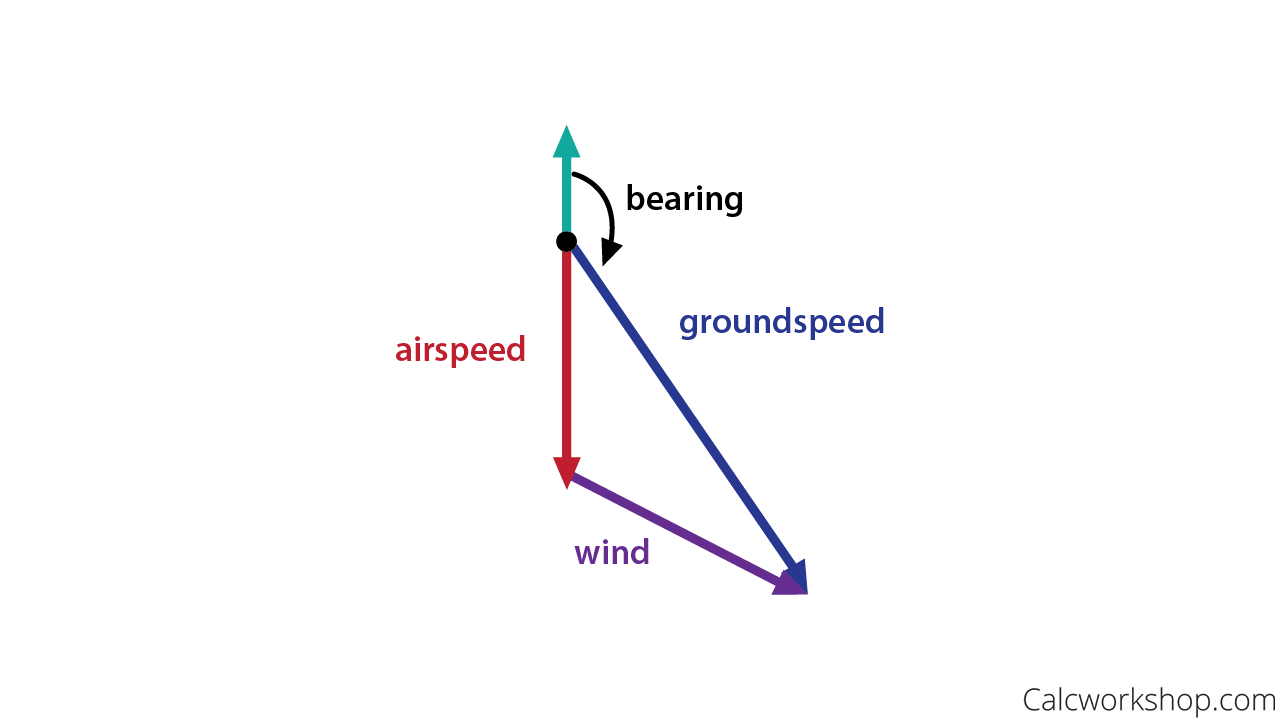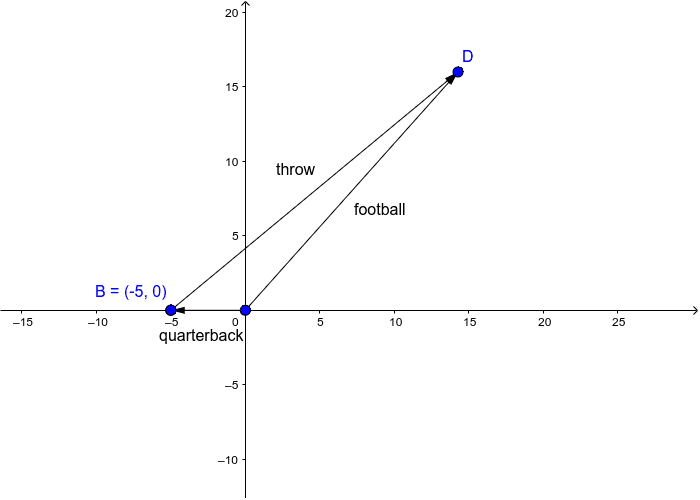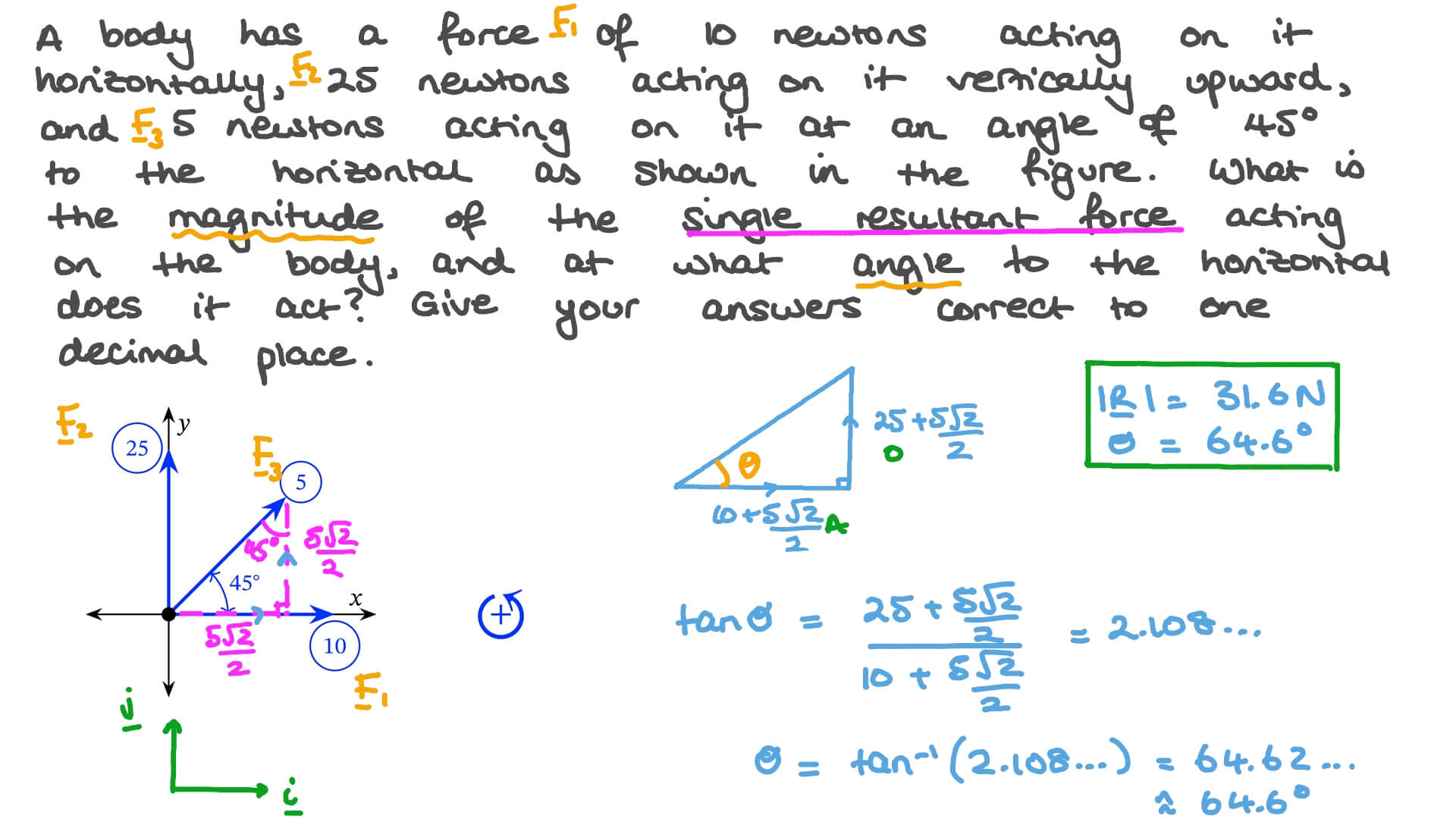How To Find Resultant Speed
The resultant force is the vector sum between the components. The resultant velocity in this case is 294 meters per second.
There are many ways to calculate vector sums such as using a vector addition diagram but using trigonometry to calculate vector components is usually more efficient.
How to find resultant speed. In order to find their resultant R we can apply either the parallelogram law or triangle rule. Now f has a magnitude of 300 Newtons g has a magnitude of 150 newtons and theres an angle of 110 degrees between them. Which indicates that the resultant force R has the same direction as a and has magnitude equal to the product m a.
Find the resulting speed and direction of the barge. Hi new here and am hoping this is in the correct forum and if so that someone can help with this little problem. For example if a box of 15 kg is subject to 5 forces which make it accelerate 20 ms 2 north-west then the resultant force is directed north-west and has the magnitude equal to 15 kg 20 ms 2 30 N.
1st Law Newtons 2nd Law P1 Physics physics comics power practical electricity pressure project radiation reflection refraction resultant force sound terminal velocity thermal transfer things around us tickertape timer Topic Current Electricity. Resultant wind speeddirection. A quarterback running backwards at 5 ms throws a football with a velocity of 25 ms at am angle of 40 degrees with the horizontal.
So lets find the resultant of the two forces g and f. A barge is pulled by two tugboats. When these forces add to zero the resultant force is zero the object maintains a constant speed.
Resultant velocity is the vector sum of all given individual velocities. I make short to-the-point online math tutorials. A headwind subtracts from the ground speed while a tailwind adds to it.
What are the rectangular components of the quarterbacks path. It is the result of adding two or more vectors together. The average wind speed is the simple scalar average of the wind speed observations.
The first tugboat is traveling at a speed of 15 knots with heading 130 and the second tugboat is traveling at a speed of 11 knots with heading 190. November 7 2017 by evantoh Leave a comment. Then break down each velocity into x and y components.
A unit-vector average is used to calculate the average wind direction. Accordingly what is the resultant velocity. The Resultant velocity for two velocity components is known from kinematics flow while considering the velocity components u and v in the relation between stream function and velocity potential function and is represented as V sqrtu2 v2 or resultant_velocity sqrtVelocity component at u2 Velocity component at v2.
How to calculate resultant velocity. The resultant is the vector sum of two or more vectors. Often however we know the forces that act on an object and we need.
Velocity is a vector because it has both speed and direction. To calculate the resultant velocity first you must break up each individual velocity into its magnitude and direction vector. What happen if resultant force is zero.
The resultant velocity of the plane that is the result of the wind velocity contributing to the velocity due to the planes motor is the vector sum. Winds at other angles to. Next add together all of the x.
To say that vector R is the resultant displacement of displacement vectors A. Basically I would like to know if there is a quick way of calculating an average or resultant wind speed and direction given a. The resultant velocity in this case is 294 meters per second.
I struggled with math growing up and have been able to use those experiences to help students improve in ma. When the forces do not add to zero there is a non-zero resultant force the object will either speed up slow down or change direction. If displacement vectors A B and C are added together the result will be vector R.
Resultant force-time graph link to speed-time graph. So lets recall the parallelogram method. One may also ask how do you find the ground speed of a plane.
Ground speed can be determined by the vector sum of the aircrafts true airspeed and the current wind speed and direction. Round your answers to the nearest whole number. We have to find both of its length and its direction.
If there are several forces acting on the same point we can apply the polygon rule to find their resultant. In this technique unity serves as the length of the vector and the wind direction observations serve as the orientation of the vector. The u and v components are then calculated for each.
Finding the resultant means finding the vector that these two add up to. As shown in the diagram vector R can be determined by the use of an accurately drawn scaled vector addition diagram. Resultant SpeedDirection two forces Author.
Physics Magnitude Of Resultant Vectors

Resultant Velocity An Overview Sciencedirect Topics

Determine Resultant Of Two Vectors Using Pythagorean Theorem Solved Problems In Basic Physics

Find Velocity Vectors Airspeed Groundspeed 3 Popular Examples

Difference Between Adding Force Vectors And Adding Velocity Vectors Physics Stack Exchange

Resultant Speed Direction Two Forces Geogebra

How To Find The Resultant Of Two Vectors Youtube

Equation Of Motion 1 Acceleration Is The Change In Velocity Per Unit Time From Standard Grade Ppt Download

Newton S Laws S4 Physics Revision

Vector Diagram Resultant Velocity Concept Youtube
Physics Magnitude Of Resultant Vectors

Resultant Velocity An Overview Sciencedirect Topics

State Triangle Law Of Vectors Addition Find Analytically The Magnitude And Dirction Of Resultant Vector

Question Video Finding The Magnitude And Direction Of The Resultant Force Of Three Forces Acting On A Body Nagwa

Resultant Velocity An Overview Sciencedirect Topics

Calculating Resultant Forces Vector Diagrams Graphs Work Done Calculations Equilibrium Parallelogram Of Forces Tension Vector Forces Gcse 9 1 Physics Igcse Revision Notes




Post a Comment for "How To Find Resultant Speed"